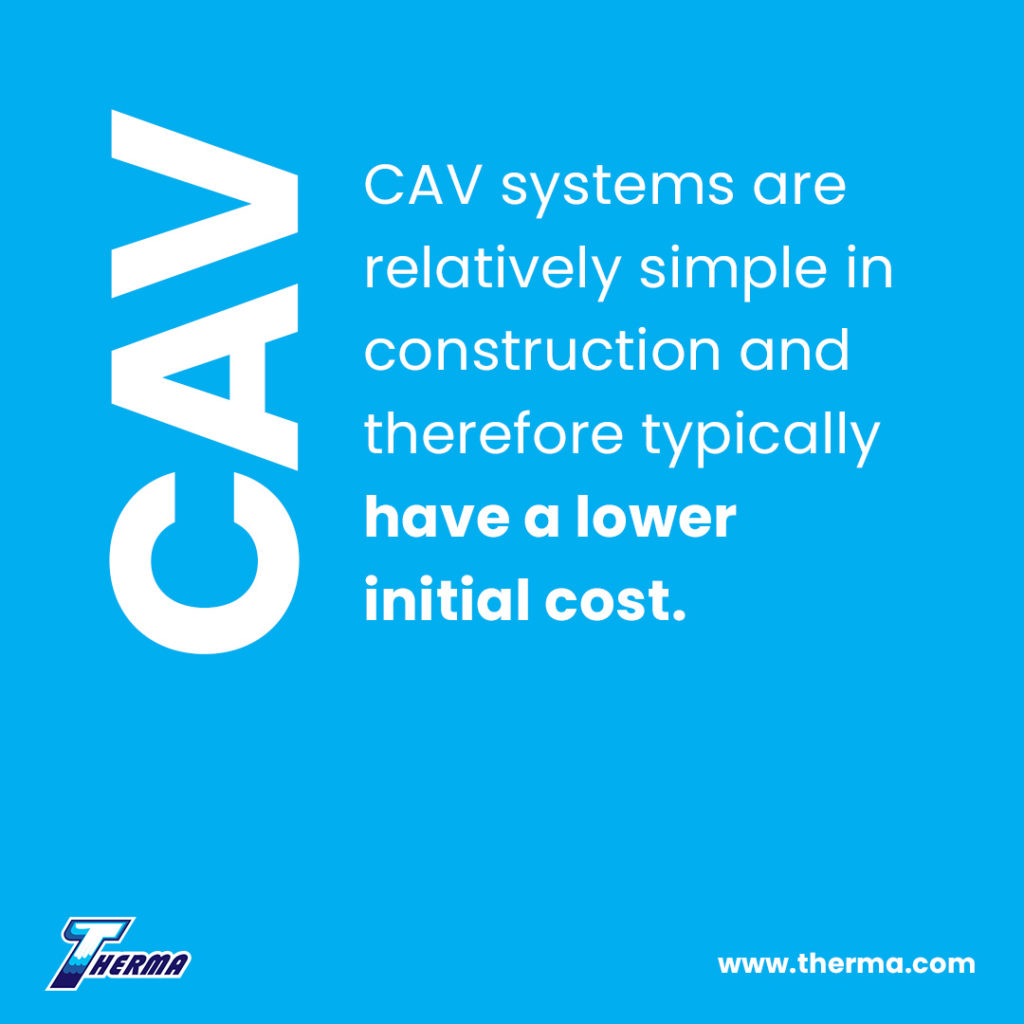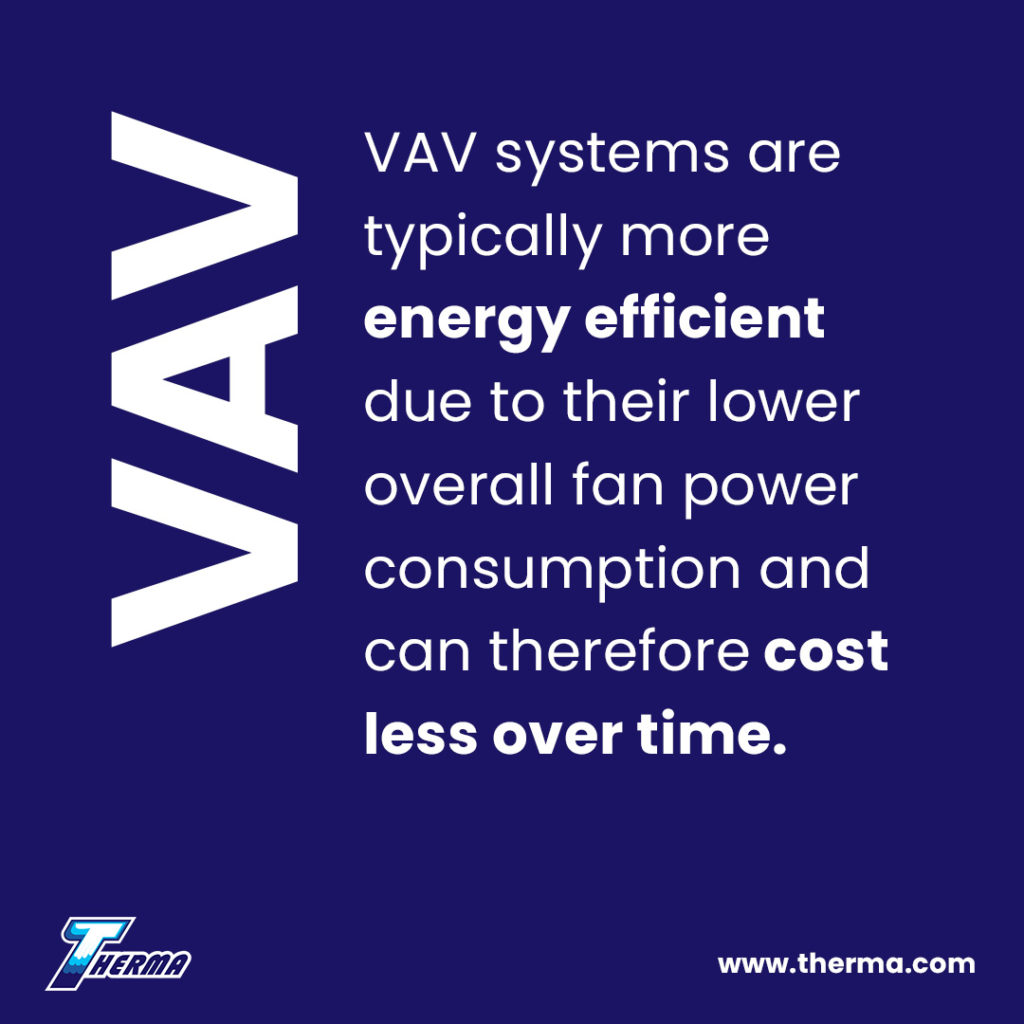Heating, ventilation and air-conditioning (HVAC) systems are designed to maintain comfortable and healthy climatic conditions inside buildings by maintaining the building temperature and humidity within specific ranges and ensuring adequate supply of fresh air.

The complexity of the system depends on the configuration of the building and the number of different zones – spaces with potentially difference climatic needs – that must be serviced. HVAC systems can be divided into two broad categories – constant air volume (CAV) and variable air volume (VAV) – based on how they supply the ventilation air.
CAV Systems

Constant air volume systems provide ventilation at a constant volume flow rate to all zones and regulate the building climate by supplying that air in an on/off fashion or at different temperatures by varying the heating / cooling rate. The control of these systems is typically quite crude: for example, when a zone temperature exceeds the specified limits, a blast of cool air is supplied at a constant rate until the temperature is once again measured to be suitably low and the HVAC system switches off.
CAV systems are relatively simple in construction and therefore typically have a lower initial cost. These systems are best suited to situations where the HVAC requirements of the building are basic: single zones or multiple zones with very similar climate requirements.
VAV Systems

Variable air volume systems supply ventilation air at constant temperature but variable volume flow rate. They allow relatively fine control of the building climate by constantly adjusting the flow of conditioned air to maintain the specified temperature range.
The nature of the flow rate control differs from system to system but typically includes control of the supply fan(s) speed and the use of thermostat controlled flow dampers in each zone. VAV systems are more complicated than CAV systems and can cost more upfront but are typically more energy efficient due to their lower overall fan power consumption and can therefore cost less over time.
Constant or Variable Air Volume?
VAV systems are far better at servicing multi-zone buildings with variable HVAC requirements (a multi-story, multi-purpose commercial building for example). They also provide much finer climate control than CAV systems which generate a sawtooth-like temperature profile due to their on/off operation. CAV systems can be an effective low cost alternative for single zone buildings with simple HVAC requirements such as a large storage warehouse or factory.
VAV system wear is generally less due to the more gentle fluctuations in fan speed versus the regular on/off switching in CAV systems. However, the greater complexity of VAV systems means that maintenance may be more complicated.
The choice of constant of variable air volume for your HVAC system depends on a number of factors that will affect life cycle cost and performance. With their greater energy efficiency it is likely that VAV systems will become increasingly popular.
By Michael Owen, PhD
Michael is a mechanical engineer working in academia. His research encompasses various aspects of fluid dynamics and heat transfer with a strong emphasis on industrial heat exchangers.
Sources:







